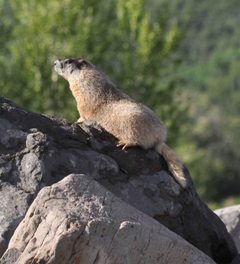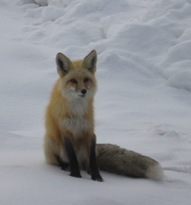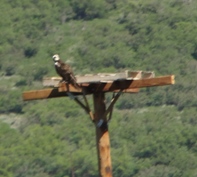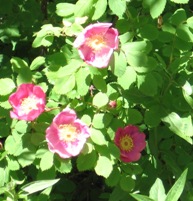Mule deer, elk and marmot as well as diverse wetland, riparian and aquatic plant communities and an interesting geology await the nature enthusiast at Vega State Park.


Wildlife
Many migratory and resident birds are seen in this area including the raven, black-billed magpie and scrub jay. Waterfowl and shorebirds are also attracted to the reservoir. Mule deer and elk are a common sight, as are marmot, cottontail rabbit, least chipmunk, beaver, coyote and ground squirrel. Anglers especially enjoy the cold-water fishing opportunities, which include rainbow, cutthroat, cutbow and brook trout. Ospreys have started to use the platforms installed on the edge of the lake and have been feeding on the fresh trout.


Plants
 Ecologically, park uplands are dominated by aspen forest, mixed mountain shrubland and montane meadow plant communities. Aspen forest communities are extremely diverse, supporting aspen, Colorado blue spruce, Rocky Mountain maple, roses, serviceberry, red-osier dogwood and a variety of forbs and grasses. Gambel oak, serviceberry, chokecherry and snowberry dominate mixed mountain shrubland communities in nearly impenetrable stands. Montane meadows within the park were once mown for hay and grazed by cattle. There are a diverse mixture of native and introduced grass and forbe species, including tufted hairgrass, Arctic rush, water sedge, smooth brome, timothy and reed canarygrass along with the fortes lupine and mule's ear. Diverse wetland, riparian and aquatic plant communities have become established around the reservoir.
Ecologically, park uplands are dominated by aspen forest, mixed mountain shrubland and montane meadow plant communities. Aspen forest communities are extremely diverse, supporting aspen, Colorado blue spruce, Rocky Mountain maple, roses, serviceberry, red-osier dogwood and a variety of forbs and grasses. Gambel oak, serviceberry, chokecherry and snowberry dominate mixed mountain shrubland communities in nearly impenetrable stands. Montane meadows within the park were once mown for hay and grazed by cattle. There are a diverse mixture of native and introduced grass and forbe species, including tufted hairgrass, Arctic rush, water sedge, smooth brome, timothy and reed canarygrass along with the fortes lupine and mule's ear. Diverse wetland, riparian and aquatic plant communities have become established around the reservoir.


Geology
Vega State Park is located on the northeast face of Grand Mesa. It is part of the broad, flat-topped erosional remnant that rises to 11,234 feet at its highest point. Exposed rocks are gently dipping Cretaceous and Tertiary sediments capped by basaltic lava flows. The lava forms a “Y” shaped outcrop pattern with the tail to the east suggesting that it filled an old stream system draining in that direction. Erosion has carved away former valley sides leaving the old lava flow standing above the surrounding terrain.
During the Pleistocene era two or more thick icecaps spread across most of the Mesa surface. In places ice “cascaded down” along old stream courses on the Mesa flanks. During later ice ages large slumps occurred on the margins of the Mesa forming a broad landslide bench of rotated lava blocks behind which many small lakes formed.
The area where Vega State Park is now located was once a fresh-water system. During the Paleozoic time it was filled with river creatures, most predominately giant fresh-water turtles and crocodiles whose remains can occasionally be found today.

